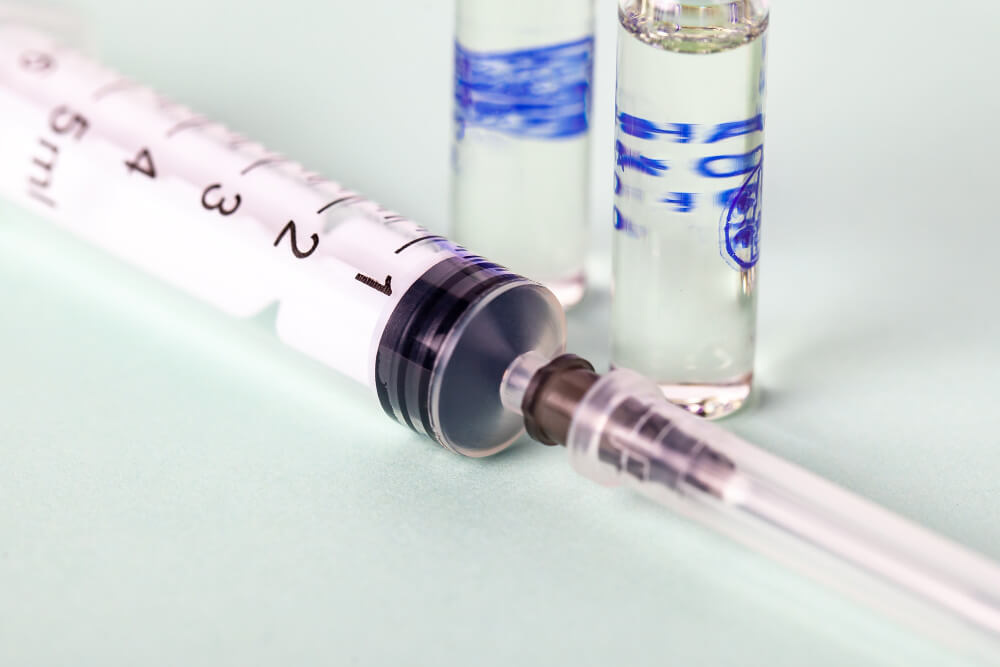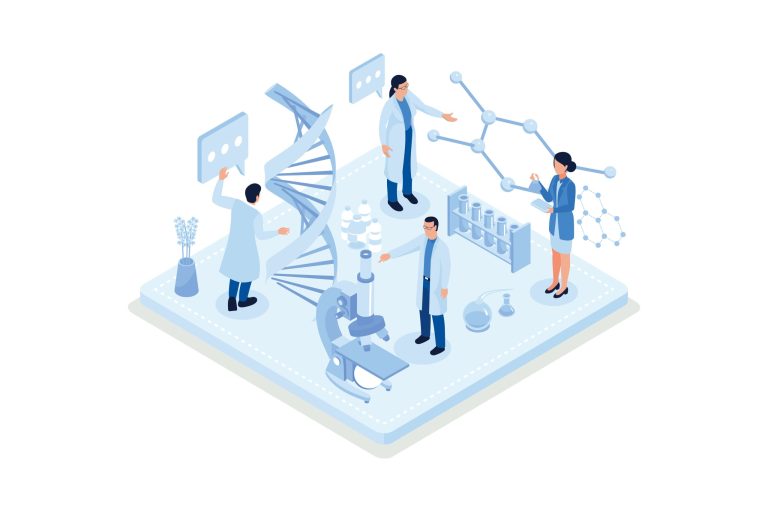The Ultimate Guide to Preventative Care: Investing in Your Future Health Today
Think about the routine maintenance you perform on your car. You change the oil, rotate the tires, and check the fluids not because it has broken down, but to prevent it from breaking down in the first place. This proactive approach saves you from costly repairs and unexpected trouble down the road. Your body, a far more complex and precious machine, deserves at least the same level of attention.
This is the fundamental principle behind preventative care. It is a forward-thinking strategy for health management that focuses on keeping you healthy and stopping illness before it starts. Instead of waiting for symptoms to appear and then reacting, preventative care empowers you to take control, identify potential risks early, and make choices that promote a long and vibrant life. It is the ultimate investment in your future self.
This guide will walk you through the essential components of preventative medicine. We will explore what it is, why it is so crucial, and what practical steps you can take to integrate it into your life. The goal is to demystify the process and provide you with the knowledge to partner with your healthcare providers in building a resilient foundation for lifelong wellness.

What Exactly Is Preventative Care?
At its core, preventative care is a healthcare philosophy centered on prevention rather than treatment. It encompasses all the measures you take to prevent diseases from developing. This stands in stark contrast to reactive or curative medicine, which is what most people think of when they imagine healthcare: visiting a doctor for a specific ailment like the flu, a broken bone, or a persistent cough.
Reactive medicine is absolutely necessary, but it addresses problems that have already taken hold. Preventative medicine aims to stop those problems from ever occurring. It involves a wide spectrum of activities, from making healthy lifestyle choices and getting vaccinated to undergoing regular medical screenings designed to catch the earliest signs of trouble.
Think of it as the difference between building a strong fence at the top of a cliff and parking an ambulance at the bottom. Both serve a purpose, but the fence is a far more effective strategy for ensuring safety and well-being. Preventative care is your health’s protective fence.

Why Should I Prioritize Preventative Health?
Embracing a preventative mindset offers profound benefits that extend far beyond simply avoiding sickness. It is about enhancing your overall quality of life, both now and for decades to come. The reasons to prioritize it are compelling and deeply personal.
First and foremost, prevention is a cornerstone of longevity. By managing risk factors like high blood pressure, poor nutrition, and a sedentary lifestyle, you significantly reduce your chances of developing chronic diseases such as heart disease, type 2 diabetes, and certain cancers. These conditions are among the leading causes of premature death and disability worldwide.
Beyond adding years to your life, preventative care adds life to your years. Early detection of potential issues through regular screenings means that if a problem does arise, it can be treated more effectively and with less invasive methods. This translates to better health outcomes and a higher quality of life, allowing you to remain active, independent, and engaged in the activities you love.
There is also a significant financial benefit. The cost of managing a chronic disease over many years far exceeds the cost of routine check-ups and screenings. By investing a small amount of time and money in prevention today, you can avoid astronomical healthcare bills in the future. It is one of the wisest financial decisions you can make for your long-term security.

What Are the Different Types of Preventative Care?
Preventative care is not a single action but a multi-layered approach that medical professionals often categorize into three distinct stages. Understanding these levels can help you see how different health activities fit into a cohesive strategy for wellness.

What Is Primary Prevention?
Primary prevention is the most proactive form of care. Its goal is to prevent the onset of illness or injury before the disease process even begins. These are the actions you take when you are healthy to ensure you stay that way.
Key examples of primary prevention include maintaining a balanced diet rich in nutrients, engaging in regular physical activity, and avoiding tobacco products. Immunizations are another classic example, as they protect you from infectious diseases like measles, tetanus, and influenza. Wearing a helmet while cycling or a seatbelt in a car are also forms of primary prevention aimed at avoiding injury.
These are the foundational habits that build a resilient body and mind. They are entirely within your control and form the bedrock of a long, healthy life. Primary prevention is about creating an environment in your body where disease struggles to find a foothold.

What Is Secondary Prevention?
Secondary prevention focuses on early detection. The aim here is to identify and treat a disease at its earliest, most manageable stage, often before any noticeable symptoms have developed. This can halt or slow its progress, leading to better outcomes and preventing long-term complications.
Regular health screenings are the hallmark of secondary prevention. This includes routine blood pressure measurements to detect hypertension, cholesterol tests to identify high lipid levels, and blood sugar tests for prediabetes or diabetes. It also encompasses cancer screenings like mammograms for breast cancer, Pap tests for cervical cancer, and colonoscopies for colorectal cancer.
By catching these conditions early, you and your doctor can intervene with lifestyle changes or medical treatments that are typically less aggressive and more successful. Secondary prevention is your early warning system, giving you a crucial head start in managing your health.

What Is Tertiary Prevention?
Tertiary prevention comes into play when a disease or condition is already established. The goal is to manage the condition, slow or stop its progression, and prevent further complications or disability. It is about improving your quality of life and maintaining function despite an ongoing health issue.
Examples of tertiary prevention include cardiac or stroke rehabilitation programs, which help patients regain skills and prevent future events. It also involves chronic disease management programs for conditions like diabetes or asthma, where patients learn to monitor their health and adhere to treatment plans. For someone with arthritis, physical therapy to maintain joint mobility is a form of tertiary prevention.
This level of care highlights that even with a diagnosis, the principles of prevention remain critically important for maximizing well-being and preventing a condition from dictating the course of your life.

What Role Does My Doctor Play in Prevention?
While your daily choices are foundational, your relationship with a healthcare provider is a vital partnership in your preventative care journey. A primary care physician is your expert guide, helping you navigate the complexities of health screenings, risk assessments, and personalized medical advice. Establishing a long-term relationship with a trusted doctor is one of the best things you can do for your health.
Regular check-ups, often called annual physicals, are the cornerstone of this partnership. This is your dedicated time to discuss your health history, lifestyle, and any concerns you may have. Your doctor will perform a physical exam, recommend appropriate screenings based on your age, sex, and risk factors, and ensure your vaccinations are up to date.
This proactive engagement is becoming even more important as the healthcare landscape evolves. Many systems are shifting toward value-based care models that reward doctors for keeping their patients healthy rather than just treating them when they are sick. This aligns the goals of both the patient and the provider, placing a greater emphasis on prevention and wellness.

What Are the Most Important Preventative Screenings?
Screening tests are the tools of secondary prevention, designed to find health problems before you have symptoms. The specific tests you need depend on your age, gender, family history, and personal risk factors. Your doctor will help you create a personalized screening schedule.

What Screenings Should I Get for Heart Health?
Heart disease remains a leading cause of death, but many of its precursors can be detected and managed early. Regular blood pressure screenings are essential, as high blood pressure often has no symptoms but significantly increases your risk for heart attack and stroke. A fasting lipoprotein profile, or cholesterol test, measures your levels of good cholesterol, bad cholesterol, and triglycerides, which are key indicators of cardiovascular risk.

How Can I Screen for Cancers?
Early detection dramatically improves the prognosis for many types of cancer. For women, this includes regular Pap tests to screen for cervical cancer and mammograms to screen for breast cancer. For both men and women, colonoscopies are the gold standard for detecting and even preventing colorectal cancer by removing precancerous polyps.
As technology advances, so do our options for detection. The development of advanced cancer screening tests that can detect signals for multiple types of cancer from a single blood sample is revolutionizing the field. Discussing these emerging options with your doctor can provide another layer of proactive monitoring.

Are There Other Important Tests to Consider?
Depending on your risk profile, other screenings are also crucial. Blood glucose tests can identify prediabetes, giving you a chance to reverse the condition before it becomes full-blown type 2 diabetes. For older adults, especially women, bone density scans can detect osteoporosis and help prevent debilitating fractures. Mental health screenings for conditions like depression and anxiety are also an integral part of comprehensive preventative care, as mental well-being is intrinsically linked to physical health.

How Does My Lifestyle Impact My Long-Term Health?
While medical screenings are vital, the choices you make every single day have the most significant and continuous impact on your health. Your lifestyle is the most powerful tool you have for primary prevention. The four pillars of a healthy lifestyle are nutrition, exercise, sleep, and stress management.

What Should I Eat for a Longer Life?
Nutrition is the fuel your body uses for every single process, from cellular repair to immune function. A diet centered on whole, unprocessed foods is paramount. This means prioritizing fruits, vegetables, lean proteins, and healthy fats like those found in avocados, nuts, and olive oil.
A plant-forward eating pattern, such as the Mediterranean diet, has been extensively studied and linked to lower rates of chronic disease. The key is to focus on nutrient density and limit your intake of processed foods, refined sugars, and unhealthy saturated and trans fats. What you eat directly influences inflammation, gut health, and your risk for nearly every major chronic illness.

How Much Exercise Do I Really Need?
Movement is medicine. The human body is designed to be active, and a sedentary lifestyle is a major risk factor for poor health. General guidelines recommend at least 150 minutes of moderate-intensity aerobic activity, like brisk walking or cycling, or 75 minutes of vigorous-intensity activity, like running, each week.
It is also essential to incorporate strength training exercises at least two days a week to maintain muscle mass and bone density. The benefits of regular exercise are vast, including improved cardiovascular health, better mood, stronger bones, and a healthier weight. The best exercise routine is one that you enjoy and can stick with consistently.

Why Is Sleep a Critical Part of Prevention?
Sleep is not a passive state of rest; it is a critical period of active restoration for your brain and body. During sleep, your body repairs tissues, consolidates memories, regulates hormones, and clears metabolic waste from the brain. Chronic sleep deprivation is linked to a higher risk of obesity, diabetes, heart disease, and impaired immune function.
Most adults need 7 to 9 hours of quality sleep per night. To improve your sleep, establish a consistent sleep schedule, create a dark and cool sleeping environment, and avoid stimulants like caffeine and screens before bed. Prioritizing sleep is one of the most effective preventative health strategies available.

How Does Stress Affect My Health?
While short-term stress is a normal part of life, chronic stress can be toxic to your health. A constant state of high alert floods your body with stress hormones like cortisol, which can lead to chronic inflammation, suppress the immune system, and increase blood pressure. This state is a contributing factor to many diseases.
Developing healthy coping mechanisms is essential for mitigating the effects of stress. Practices like mindfulness, meditation, deep breathing exercises, and yoga can help calm the nervous system. Spending time in nature, engaging in hobbies, and maintaining strong social connections are also powerful buffers against the negative health impacts of chronic stress.

What Are Some Modern Approaches to Preventative Health?
The field of preventative medicine is constantly evolving, moving beyond the traditional ‘one-size-fits-all’ model. Modern approaches increasingly focus on personalization and root-cause analysis, aiming to optimize health rather than just prevent disease. This represents a paradigm shift in how we think about wellness.
These innovative fields use advanced diagnostics to understand an individual’s unique biology, genetics, and lifestyle. The goal is to create a highly personalized roadmap for health that addresses underlying imbalances before they manifest as disease. Exploring the differences between philosophies like functional medicine vs longevity medicine can reveal how these patient-centered models are redefining proactive health for the 21st century.

How Can I Take Control of My Own Health Journey?
Ultimately, preventative care is about empowerment. It is about you taking an active role in your well-being instead of being a passive recipient of healthcare. This requires education, self-advocacy, and knowing where to turn for reliable information and support.

Why Is Health Literacy Important?
Health literacy is your ability to find, understand, and use information and services to make well-informed health decisions for yourself and others. It is a critical skill for navigating the healthcare system, understanding a doctor’s recommendations, and evaluating the credibility of health information you encounter online. Without it, it is difficult to be a true partner in your own care.
Fortunately, there are excellent resources available to help you. Taking steps to improve your health literacy with user-friendly tools can build your confidence and make you a more effective advocate for your own health.

Where Can I Find Reliable Health Information?
In an age of information overload, it is crucial to rely on credible sources. Start with your primary care provider, who can offer personalized advice. For broader research, look to established health organizations and government agencies. Taking a global perspective on preventive health care by consulting sources like the World Health Organization can provide a solid, evidence-based understanding of key health topics.

What if I Already Have a Chronic Condition?
If you are living with a chronic condition, the principles of prevention are more important than ever. This is the realm of tertiary prevention, where the focus is on managing your condition to maintain the best possible quality of life and prevent complications. This involves adhering to your treatment plan, making healthy lifestyle choices, and staying connected with your healthcare team.
Support and education are key. Many organizations offer valuable resources and programs to help you manage your health effectively. Seeking out tools for chronic disease self-management can empower you with the skills and confidence needed to thrive while living with a long-term condition.

What Is the Future of Preventative Care?
The future of preventative care is incredibly exciting and is becoming more precise, personalized, and predictive. Advances in fields like genomics will allow for risk assessments based on your unique genetic makeup. Wearable technology is already providing real-time data on everything from sleep quality to heart rate variability, giving individuals unprecedented insight into their daily health metrics.
Artificial intelligence will help clinicians analyze vast amounts of data to identify patterns and predict disease risk with greater accuracy. To harness these innovations, it is essential that the healthcare workforce remains at the cutting edge. A commitment to ongoing professional development for public health and medical experts ensures that these powerful new tools are integrated into clinical practice safely and effectively.
This future is not a distant dream; it is rapidly becoming a reality. The overarching trend is clear: the power to prevent disease is increasingly shifting into the hands of the individual, supported by technology and guided by expert medical partners. Your health is your greatest asset, and investing in its prevention today is the most important decision you can make for a longer, healthier, and more fulfilling tomorrow.
Frequently Asked Questions

What should be documented if a patient refuses recommended preventative care?
Thorough documentation is your primary legal defense when a patient declines recommended care. The medical record must explicitly state the specific preventative service offered, the clinical rationale provided to the patient, and the potential health risks of refusal that were clearly explained. It is also critical to note that the patient demonstrated an understanding of these consequences before making their final decision.
This process is often referred to as "informed refusal" and is as crucial as obtaining informed consent. Best practice includes having the patient sign a specific refusal-of-care form, sometimes known as an Against Medical Advice (AMA) form, which is then added to their chart. Furthermore, the provider should periodically revisit the recommendation at subsequent appointments and document these ongoing conversations.

How do documentation requirements for preventative care change with telehealth visits?
While the fundamental principles of good documentation remain, telehealth visits require additional specific details for legal and billing integrity. Each note must clearly identify the service modality, such as "synchronous video visit," and confirm how patient consent for virtual treatment was obtained at the start of the encounter. You must also document the patient’s location and the methods used to verify their identity.
It is equally important to acknowledge the inherent limitations of a virtual consultation for preventative services. Document any physical exam components that were deferred and outline the explicit plan for necessary in-person follow-up care. This creates a clear and defensible record of the complete care plan and communicates the patient’s responsibilities for completing screenings.

What are the most common documentation errors that lead to liability in preventative care?
One of the most significant errors is a lack of specificity, which creates ambiguity in the medical record. For example, a note stating "counseled on lifestyle" is far less defensible than one detailing the specific diet and exercise recommendations discussed and the resources provided. Another critical error is the failure to document a clear follow-up plan and communication strategy for abnormal test results.
Inconsistency across different parts of the patient’s chart is another major source of legal vulnerability. If a preventative screening is mentioned in a visit note but is never officially ordered or tracked, it can be framed as a failure to follow through. Ensuring that visit notes, orders, problem lists, and patient communications all tell a consistent and complete story is essential for mitigating risk.
Discover the most comprehensive functional medicine training, longevity training, and biohacking certification programs designed specifically for healthcare professionals, medics, and clinic owners who want to master regenerative medicine protocols and anti-aging therapies.







